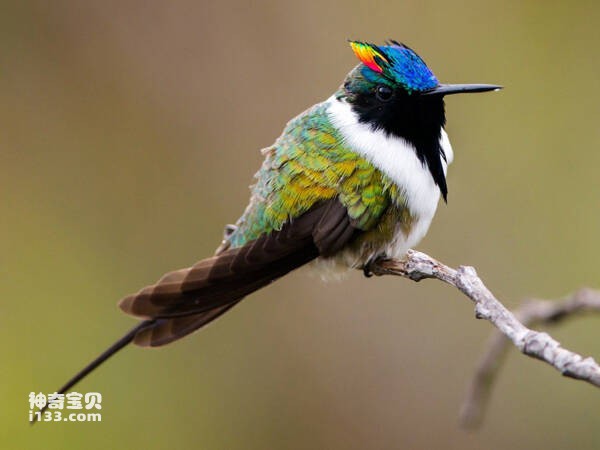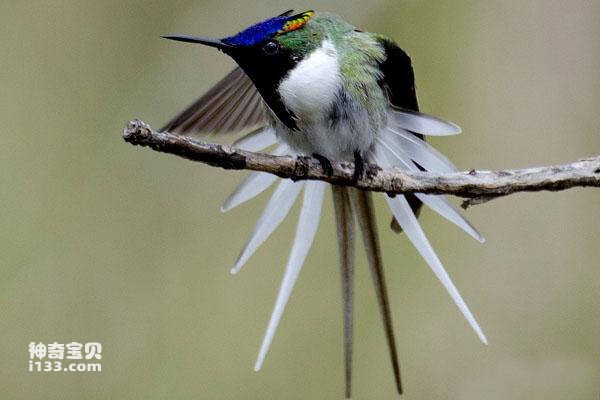Heliactin bilophus
IUCN
LCBasic Information
Scientific classification
- name:Heliactin bilophus
- Scientific Name:Heliactin bilophus,horned sungem
- Outline:Climbing birds
- Family:
Vital signs
- length:9.5-11cm
- Weight:1.8-2.8g
- lifetime:No textual research information is available
Feature
Distribution and Habitat
Country of origin: Bolivia, Brazil, Suriname.
It is mainly distributed in the border areas of central and eastern Brazil and Bolivia. Isolated populations exist in northern Brazil and Southern Suriname.
It inhabits forests, savannas, savannas and promenade forests.
Appearance
The male's bill is short and straight black. The crown is dark blue and shiny, and there are several clusters of red, blue and yellow feathers on the sides of the crown. The lower body is roughly white. Bronze upper body, black larynx and forechest, white abdomen and side neck. The tail feathers are long and sharp, and appear as a dark "V" on a white background when viewed from below when flying.
The female is similar to the male, but has no crest and a non-black throat.
Size measurement: 9.5~11cm; Weight 1.8-2.8g.
Details
horned hummingbird (Heliactin bilophus) horned sungem, no subspecies.

Horned hummingbirds feed mainly on the nectar of shrubs and trees. They also eat small insects.
The nest of the horned hummingbird is usually built in the branch of a bush about 1 meter from the ground. It is cup-shaped and made of softer plant fibers and spider silk. Two eggs are laid in a litter, and the female incubates the eggs alone for about 13 days. Chicks are 20 to 23 days old and can reproduce in the second year of adulthood.

The global population of horned hummingbirds has not been quantified, but is a rare species in its place of origin (Stotz et al. 1996). The bird readily ADAPTS to artificial habitats, such as gardens, in cultivated areas, suggesting that its population may be growing. Affected by deforestation, its habitat has expanded to include the rest of Brazil in the state of Espirito Santo (del Hoyo et al. 1999).
Listed on The IUCN Red List of Threatened Species: Not Threatened (LC), 2012 assessment.
Protect wild animals and eliminate wild meat.
Maintaining ecological balance is everyone's responsibility!








